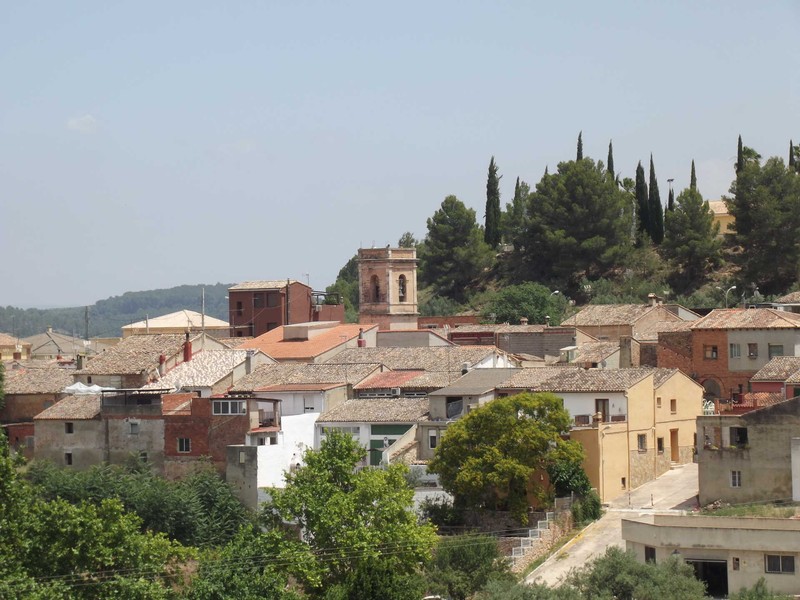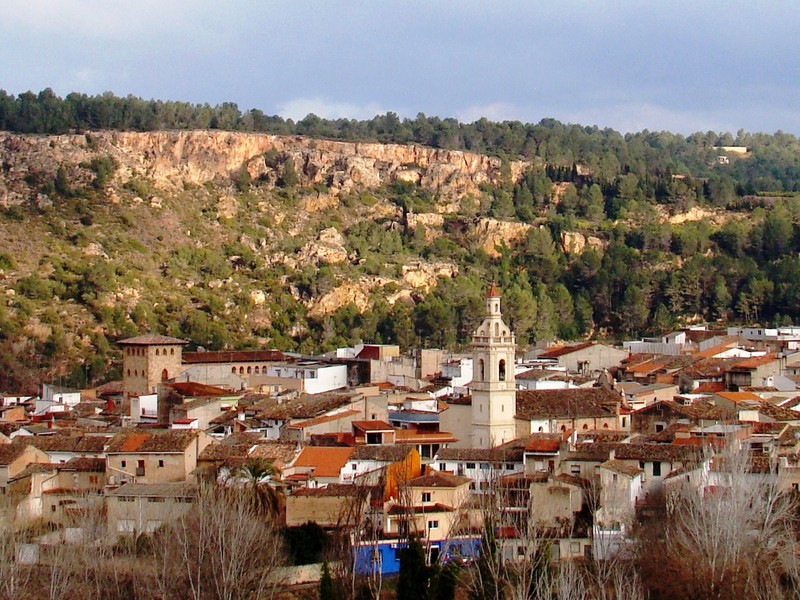Pico Caroche (Bicorp)
The Caroche or Caroig peak is a mountain of 1,126 meters, located in Teresa de Cofrentes, Spain. It is situated
The original Church was built during the mid-16th century, occupying one end of the town centre with its Moorish layout, and it was extended over different periods, the main interventions took place in the 18th century, notably with the construction of the barrel vault and the main altar in 1802, presided over by a canvas of the Immaculate Conception, the patron saint of the municipality, which we can still see today in the church. Behind the image, which when raised made it possible to see the central niche, was a Christ that people had great devotion for, and which was transferred to the Chapel in the mid-18th century, after its construction, with the devotion to the Christ of Providence.
The earthquake of 1748 resulted in the collapse of part of its vaults and damage to some of its side chapels and bell tower. The reconstruction was quick thanks to support from King Ferdinand VI, the archbishopric and the Count of Puñonrostro. This refurbishment resulted in the tempera paintings with delicate baroque drawings that we can now see on the vault in the central nave, after they were revealed in 2004.
During the year that reconstruction lasted, the Masses were held in the courtyard and chapel of the palace, as well as in front of it in Plaza de la Alameda. By January 1749 the church was able to hold mass regularly and the chapel moved the Christ that was originally housed in the niche of the main altar of the parish, and it was replaced with a sculptural image of the Immaculate Conception, and the canvas was moved from it to one of the walls of the tabernacle.
The result of the different interventions led to a church with a rectangular floor plan covered with a barrel vault, with a straight apse and 6 side chapels between buttresses on the right-hand side, one of which is devoted to the patron saint of the town St. Anthony the Abbot. On the left of the central nave was the chapel of the Virgen de los Desamparados (Our Lady of the Forsaken) and the large vaulted Chapel of the Communion with lunettes, started in 1770, taking space from the Abbey House, whose current appearance is the result of the work carried out in 1929, while the Temple of the Heart of Jesus dates back to 1934.
The current bell tower was built at the opposite end to the first one, but it is still right next to the La Canaleta watering trough-wash house. The original start of the previous staircase still remains as a remnant on the right-hand side of the main altar. As it was damaged by the earthquake and as its reconstruction was not very successful in structural or aesthetic terms, a decision was taken to demolish it, so between 1910 and 1920 the one that we currently see was built with a square floor plan and height of 34 metres with a belfry of 4 bells, the oldest of which is devoted to St. Anthony the Abbot and dates back to 1781.
At the start of the Civil War, most of the statuary was burned and the church was turned into a market. Following the war came years of reconstructing the altars and the purchase of sculptures, and others were rescued by the neighbourhood, such as that of San Francisco and the canvas of La Purísima (the Immaculate Conception) were returned to the parish Church of the Immaculate Conception.
In recent years, the Chapel of the Communion and the side chapels have been embellished, recovering the splendour they had in the second half of the 18th century.
The Caroche or Caroig peak is a mountain of 1,126 meters, located in Teresa de Cofrentes, Spain. It is situated
You will love La Canal de Navarrés! It’s an ideal destination for the whole family, to discover with friends, and

Estubeny, located in the interior of the province of Valencia, is an inland destination that hides a unique natural space,

Anna is a beautiful municipality in the Canal de Navarrés, well known for its Anna Lake, a lagoon surrounded by
Copyright © 2023. La Canal de Navarrés. All rights reserved.
Do not hesitate to contact us for any further information.
This website uses cookies so that we can provide you with the best user experience possible. Cookie information is stored in your browser and performs functions such as recognising you when you return to our website and helping our team to understand which sections of the website you find most interesting and useful.
Strictly Necessary Cookie should be enabled at all times so that we can save your preferences for cookie settings.
If you disable this cookie, we will not be able to save your preferences. This means that every time you visit this website you will need to enable or disable cookies again.